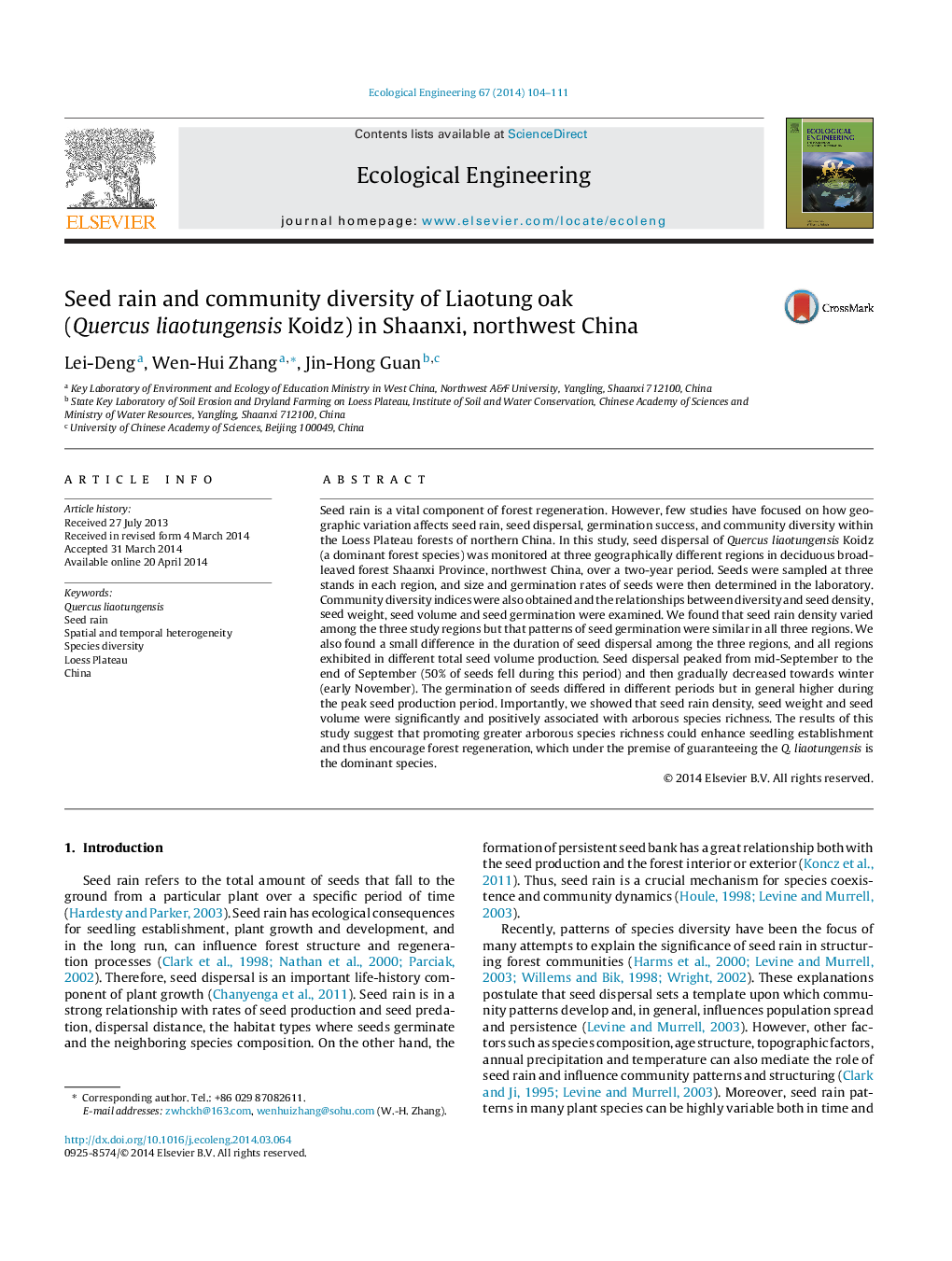| Article ID | Journal | Published Year | Pages | File Type |
|---|---|---|---|---|
| 4389419 | Ecological Engineering | 2014 | 8 Pages |
Abstract
Seed rain is a vital component of forest regeneration. However, few studies have focused on how geographic variation affects seed rain, seed dispersal, germination success, and community diversity within the Loess Plateau forests of northern China. In this study, seed dispersal of Quercus liaotungensis Koidz (a dominant forest species) was monitored at three geographically different regions in deciduous broad-leaved forest Shaanxi Province, northwest China, over a two-year period. Seeds were sampled at three stands in each region, and size and germination rates of seeds were then determined in the laboratory. Community diversity indices were also obtained and the relationships between diversity and seed density, seed weight, seed volume and seed germination were examined. We found that seed rain density varied among the three study regions but that patterns of seed germination were similar in all three regions. We also found a small difference in the duration of seed dispersal among the three regions, and all regions exhibited in different total seed volume production. Seed dispersal peaked from mid-September to the end of September (50% of seeds fell during this period) and then gradually decreased towards winter (early November). The germination of seeds differed in different periods but in general higher during the peak seed production period. Importantly, we showed that seed rain density, seed weight and seed volume were significantly and positively associated with arborous species richness. The results of this study suggest that promoting greater arborous species richness could enhance seedling establishment and thus encourage forest regeneration, which under the premise of guaranteeing the Q. liaotungensis is the dominant species.
Related Topics
Life Sciences
Agricultural and Biological Sciences
Ecology, Evolution, Behavior and Systematics
Authors
Lei-Deng Lei-Deng, Wen-Hui Zhang, Jin-Hong Guan,
